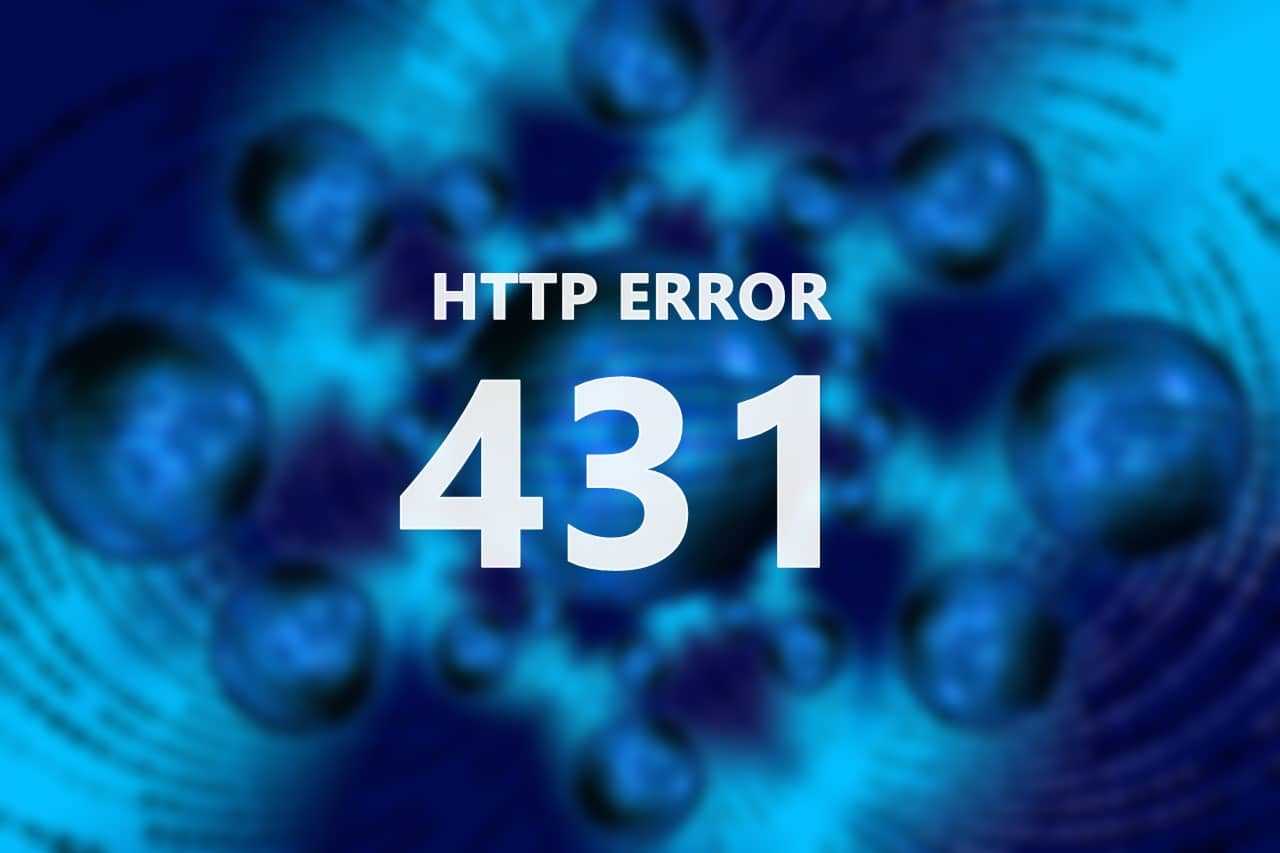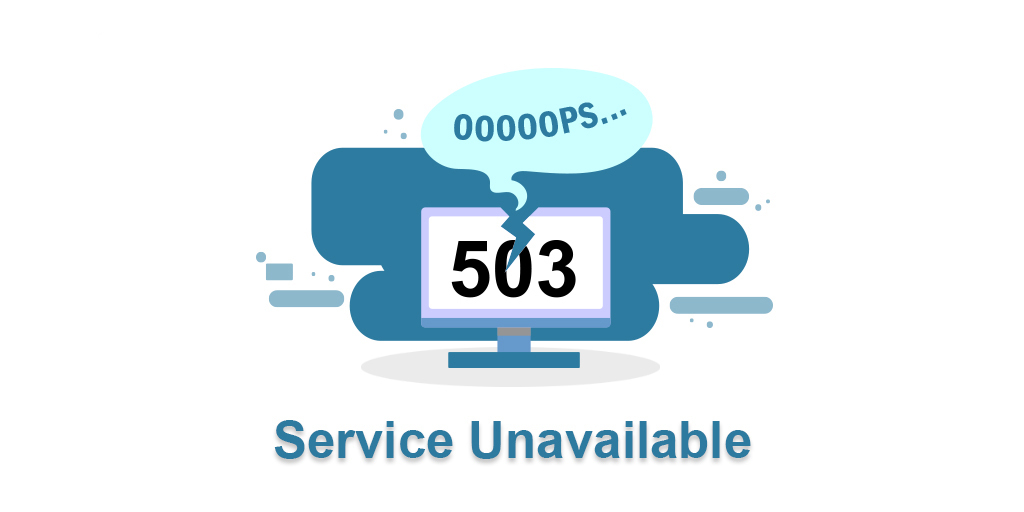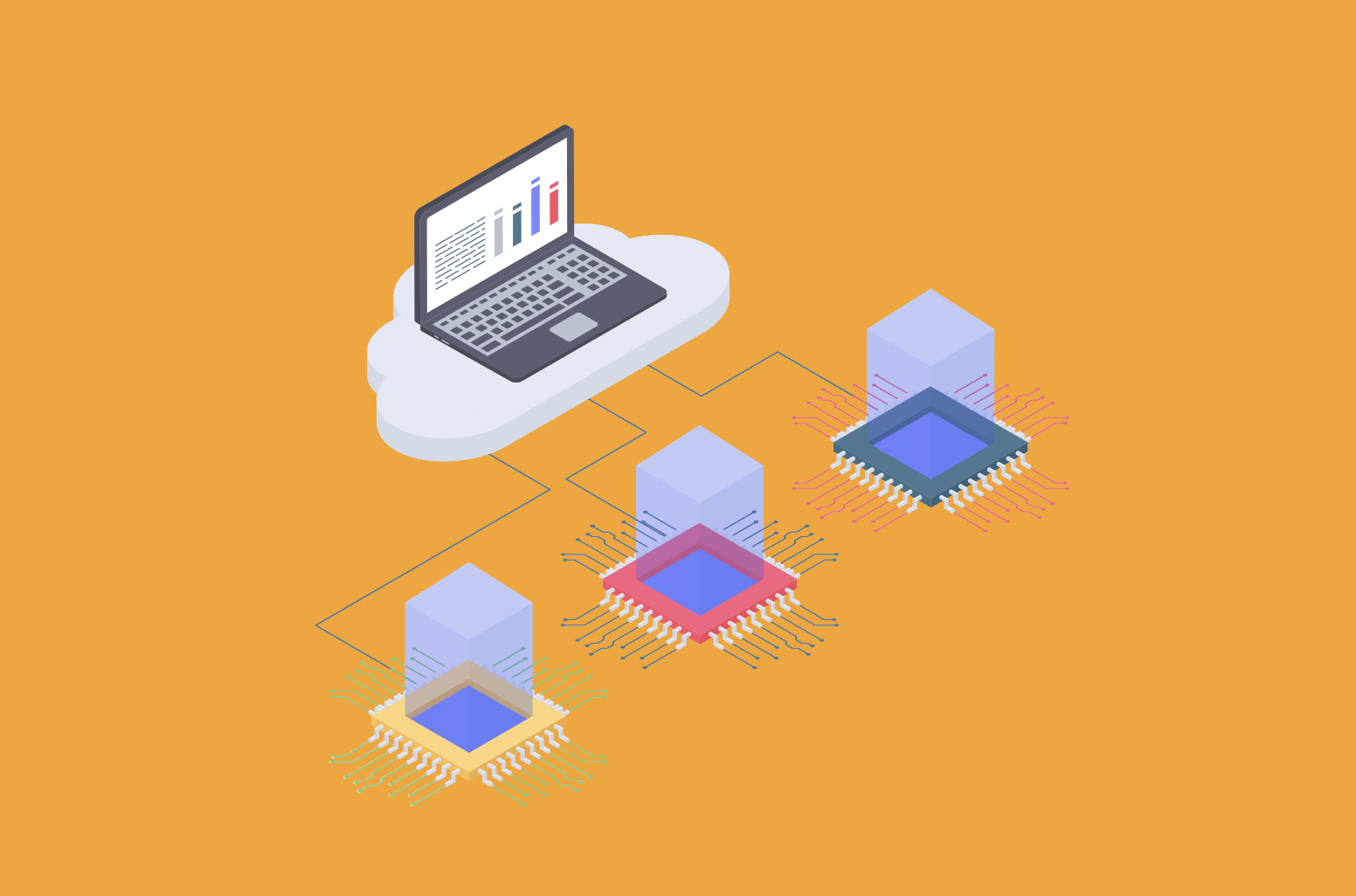HTTP and its importance
HTTP (Hypertext Transfer Protocol) is a protocol used for communication between web browsers and servers. It is the foundation of data communication on the World Wide Web. When you type a URL in your browser or click on a link, your browser sends an HTTP request to the server hosting the website, and the server responds with an HTTP response, delivering the requested content back to your browser.
HTTP is essential for the functioning of the web and has several key features that contribute to its importance.
The importance of HTTP lies in its role as the backbone of web communication. It enables the retrieval, display, and interaction with web content, facilitating the seamless browsing experience we enjoy today. Understanding HTTP is essential for web developers, network administrators, and anyone involved in creating or maintaining web-based applications and services.
Introduction to HTTP status codes and HTTP Error 431
HTTP status codes are three-digit numbers that are returned by a web server in response to a client's request. These status codes provide information about the outcome of the request and help in troubleshooting and understanding the state of the communication between the client and the server. One such status code is HTTP Error 431.
HTTP Error 431 is categorized as a client error response code. It specifically falls within the range of 400-499 status codes, which indicate that there was an issue with the client's request.
Error 431, also known as "Request Header Fields Too Large," occurs when the server rejects the client's request because the headers in the HTTP request are too large. HTTP headers contain additional information about the request, such as cookies, user agent details, and custom headers. These headers are sent by the client to provide context and instructions to the server.
The server imposes a limit on the size of the request headers it can accept. If the total size of the headers exceeds this limit, the server responds with a 431 status code, indicating that the request could not be processed due to oversized headers.
The most common cause of this error is when a client sends a request with an excessive number of cookies or very long cookie values. This can happen if the client has accumulated a large number of cookies from previous requests or if the client is using a proxy or firewall that adds additional headers, thereby increasing the overall size of the request headers.
To resolve this error, the client needs to reduce the size of the headers in the request. This can be done by reducing the number of cookies sent, reducing the length of cookie values, or removing unnecessary headers.
It's worth noting that the specific limit on the size of the headers is determined by the server's configuration and may vary. It is generally advisable for developers and system administrators to be aware of these limits and ensure that the requests sent by clients comply with them to avoid encountering HTTP Error 431.
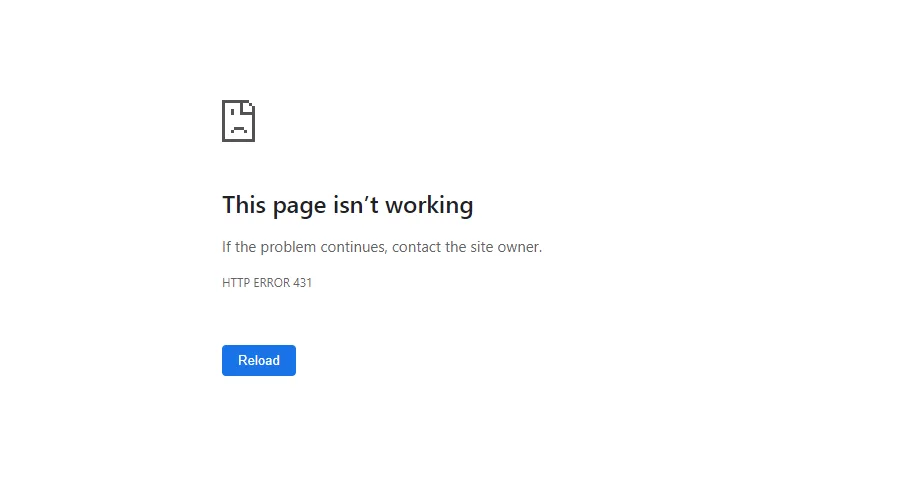
Diagnosing HTTP Error 431
When diagnosing HTTP Error 431, also known as "Request Header Fields Too Large," it's important to understand that this error occurs when the server rejects a client's request because the headers in the HTTP request are too large. Here are some steps you can take to diagnose and address this issue:
Confirm the error: If you encounter an HTTP Error 431, the server's response will include the 431 status code along with an error message. Ensure that you are indeed receiving this specific error code.
Check request headers: Analyze the headers in the client's HTTP request. You can inspect the request headers using browser developer tools, command-line tools like cURL, or server logs. Look for any headers that might be contributing to the large size of the request.
Review cookie-related headers: Cookies are often the primary cause of oversized headers. Check for excessively long cookie values or a large number of cookies being sent. Reduce the number of cookies or truncate the length of cookie values if necessary.
Check for proxy or firewall interference: If you're using a proxy server or firewall, they might be adding additional headers to the request, increasing its size. Ensure that these intermediaries are properly configured and not causing the request headers to exceed the server's limits.
Review custom headers: If you have custom headers in your request, verify if they are necessary. Consider removing any unnecessary custom headers to reduce the overall size of the request.
Verify server limits: Each server has its own configuration and limit on the size of headers it can accept. Consult the server's documentation or configuration files to determine the specific limit. Ensure that the request headers are within this limit.
Test with different clients: If the issue persists, test the request with different clients, such as different web browsers or command-line tools. This will help determine if the problem is specific to a particular client or if it's a more general issue.
Implement header compression or optimization: If reducing the size of headers is not sufficient, consider implementing header compression or optimization techniques. This can help compress or reduce the overhead of the headers being sent, allowing them to fit within the server's limits.
By following these steps, you can diagnose the cause of HTTP Error 431 and take appropriate measures to address it. Remember to consider factors such as cookie size, custom headers, proxy or firewall interference, and server limits when troubleshooting this error.
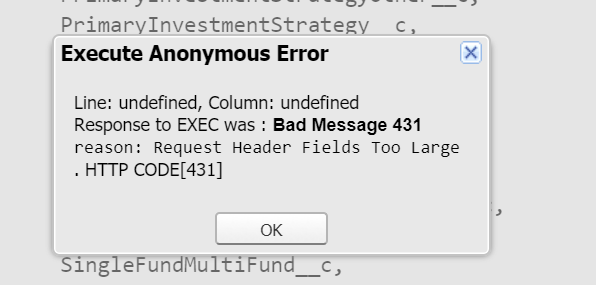
How to Fix HTTP Error 431
To fix HTTP Error 431, also known as "Request Header Fields Too Large," you need to address the issue of oversized headers in the client's HTTP request. Here are some steps you can take to resolve this error:
Reduce the number of cookies
HTTP Error 431 often occurs when there are too many cookies in the request. Review the cookies being sent and reduce their number if possible. Remove any unnecessary cookies or consider using cookie consolidation techniques.
Shorten cookie values
If the length of cookie values is causing the headers to exceed the server's limit, shorten the values. You can truncate or abbreviate long cookie values while ensuring their integrity and usability.
Remove unnecessary headers
Review the headers being sent and remove any unnecessary ones. Only include headers that are essential for the request and response. Removing unused headers can significantly reduce the size of the request headers.
Implement header compression or optimization
Consider implementing header compression techniques, such as gzip compression, to reduce the size of the headers. Compression algorithms can effectively reduce the overhead of headers without losing critical information.
Configure server limits
Check the server's configuration for any limits imposed on request headers. If you have control over the server configuration, consider adjusting the limits to accommodate larger headers if necessary. However, be mindful of the potential impact on server performance and security.
Test with different clients
If the error is specific to a particular client, try accessing the website or service from a different browser or device. This will help determine if the issue lies with the client or if it's a more widespread problem.
Consult with server administrators or hosting provider
If you are unable to resolve the error on your own, reach out to the server administrators or hosting provider for assistance. They may be able to provide further insights or adjust server configurations to help mitigate the issue.
It's important to note that the exact steps to fix HTTP Error 431 can vary depending on the specific circumstances and configurations of your environment. The goal is to ensure that the size of the headers in the client's request falls within the server's limits. By implementing these measures, you can effectively address and resolve the HTTP Error 431.
Prevention Strategies for HTTP Error 431
Preventing HTTP Error 431, also known as "Request Header Fields Too Large," involves implementing strategies to ensure that the headers in client requests remain within the server's limits. Here are some prevention strategies you can follow:
Optimize header usage: Carefully evaluate the headers being used in your application. Use only necessary headers and avoid including excessive or redundant ones. Minimizing the number of headers helps reduce the overall size of the request.
Limit cookie size and number:Cookies are a common cause of oversized headers. Set reasonable limits on the size of cookies and the number of cookies being used. Be mindful of the data stored in cookies and ensure they are essential for the functioning of your application.
Implement header compression: Use compression techniques such as gzip compression to reduce the size of the headers being sent. Compressing headers can significantly minimize their overhead without losing critical information.
Evaluate third-party services and plugins: If you rely on third-party services or plugins that add headers to requests, review their usage and configurations. Ensure they are not adding unnecessary headers or inflating the request size.
Configure server limits: Check the server configuration and set appropriate limits for request headers. Understand the specific limits imposed by your server or hosting environment and adjust them if necessary. However, be cautious not to set overly permissive limits that may impact server performance or security.
Monitor and analyze requests: Regularly monitor and analyze the size and composition of incoming requests. This will help you identify any patterns or anomalies that might contribute to oversized headers. Use monitoring tools or server logs to gather data and make informed decisions.
Conduct compatibility testing: Test your application with various clients, browsers, and devices to ensure compatibility and header size compliance across different platforms. Identify and resolve any issues that arise from specific client configurations.
Stay informed about updates and best practices: Keep up to date with the latest HTTP standards and best practices. Stay informed about any changes or recommendations related to request headers. This will help you implement preventive measures and adapt to evolving standards.
By implementing these prevention strategies, you can minimize the occurrence of HTTP Error 431 and ensure that the headers in your client requests remain within acceptable limits. Taking proactive steps to optimize header usage and stay within server limits will contribute to the overall performance and reliability of your application.
Conclusion
In conclusion, understanding and addressing HTTP Error 431, or "Request Header Fields Too Large," is crucial for maintaining smooth and efficient communication between clients and servers. By following the diagnosis and solution steps outlined in this blog post, you can effectively diagnose the root causes of the error and implement appropriate measures to resolve it.
Diagnosing HTTP Error 431 involves examining request headers, particularly cookies and custom headers, as they are often the culprits behind oversized headers. It's essential to review the headers, reduce the number of cookies, shorten cookie values, remove unnecessary headers, and consider implementing header compression techniques.
Additionally, checking for proxy or firewall interference, testing with different clients, and ensuring server limits are properly configured are essential steps in diagnosing and resolving this error. By considering these factors and taking the necessary actions, you can effectively address HTTP Error 431 and optimize the communication between clients and servers.
What is HTTP Error 431?
HTTP Error 431, also known as "Request Header Fields Too Large," occurs when the server rejects a client's request because the headers in the HTTP request exceed the server's limit.
What causes HTTP Error 431?
HTTP Error 431 is typically caused by oversized request headers. Common culprits include excessive cookies, long cookie values, custom headers, and additional headers added by proxies or firewalls.
How can I diagnose HTTP Error 431?
To diagnose HTTP Error 431, you can check the server's response, review the request headers, inspect cookies, analyze custom headers, and verify the server's configuration and limits.
How can I fix HTTP Error 431?
To fix HTTP Error 431, you can reduce the number of cookies, shorten cookie values, remove unnecessary headers, implement header compression techniques, configure server limits, and test with different clients.
Are there any preventive measures for HTTP Error 431?
Yes, there are preventive measures for HTTP Error 431. These include optimizing header usage, limiting cookie size and number, implementing header compression, monitoring and analyzing requests, and staying informed about updates and best practices.
Can HTTP Error 431 be client-specific?
Yes, HTTP Error 431 can be specific to a particular client if the headers in that client's request exceed the server's limit. Testing with different clients can help identify if the issue is client-specific.
Should I adjust server limits to avoid HTTP Error 431?
Adjusting server limits can be a solution for HTTP Error 431, but it should be done cautiously. Consider the impact on server performance and security before making any adjustments.
How can I avoid HTTP Error 431 in my web applications?
To avoid HTTP Error 431, optimize header usage, limit cookies, compress headers, monitor requests, conduct compatibility testing, and stay informed about HTTP standards and best practices.

Nadejda Milanova
An experienced Content creator in the field of Search Engine Optimization (SEO) and WordPress. A true proffesional with a Master's degree focused on journalism.
Read more by Nadejda Milanova

